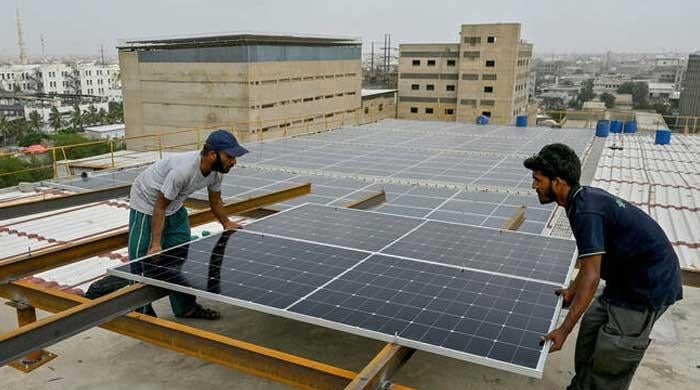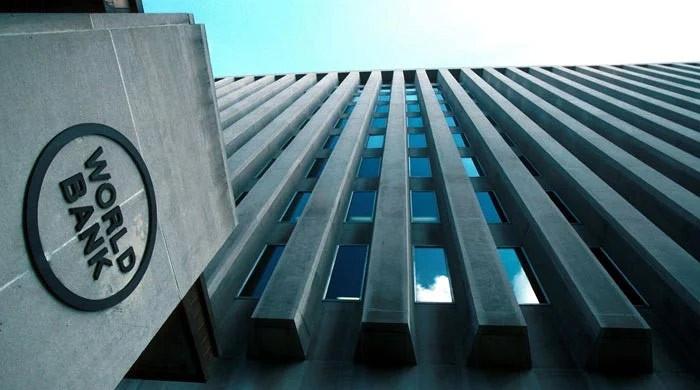GDP growth rate under PDM govt turned negative
This is the second lowest growth figure ever recorded in Pakistan in the last 50 years
November 29, 2023

- This is second lowest growth ever seen by Pakistan in last 50 years.
- Growth rate notified after NAC reviewed revised figures.
- Industry-wise methodology of compiling quarterly GDP examined.
ISLAMABAD: In order to win over the International Monetary Fund (IMF), the caretaker government has revised the GDP growth rate claimed by the Pakistan Democratic Movement (PDM) government from 0.29% to -0.17% for the financial year 2022-23, reported The News on Wednesday.
This is the second lowest growth ever seen by the country in the last 50 years, as the lowest growth achieved by the country was -1% during the COVID-19 pandemic. However, the GDP growth rate has turned positive and stood at 2.13% during the first quarter (July-September) ongoing fiscal year 2023-24 compared to the -2.7% seen in the last quarter of FY 2022-23.
This data shows that the growth rate under the PDM-led government was 0.29% in the provisional data, but in the finalised figure it has been earmarked in the negative zone of 0.17% for the whole financial year 2022-23.
According to an official statement issued by the Pakistan Bureau of Statistics (PBS), the National Accounts Committee (NAC) approved the introduction of Quarterly National Accounts in the statistical system of the country.
The figures were released after the NAC met to review the annual GDP estimates for the years 2021-22 (final), 2022-23 (revised), and quarterly estimates from Q1 2016-17 to Q1 2023-24 at the Ministry of Planning, Development, and Special Initiatives.
The meeting was chaired by the planning secretary.
The final GDP growth rate of FY 21-22 has been estimated at 6.17% up from the 6.10% shown in the revised figures. The revised growth rate of GDP for the year 2022-23 is estimated at -0.17%, which was provisionally estimated at 0.29%.
As an extraordinary step in the history of macroeconomic statistics of Pakistan, the NAC reviewed, examined, and approved the industry-wise methodology of compiling the quarterly GDP as well as the series of quarterly growth rates of GDP for various industries from Q1 2016-17 to Q1 2023 by taking 2015-16 as the base year.
Later on, the IMF included the QNA compilation in its structural benchmark of the Stand-By Arrangement (SBA), which stated that “PBS will compile and disseminate the First Quarter estimates for 2023-24 and the revised annual estimates for the financial year 2022-23 by the end of November 2023.”
To meet the structural benchmark under the SBA, PBS held meetings with stakeholders and data providers and presented the revised GDP numbers for 2022-23 and Q1 2023-24 before the NAC. The committee approved the QNA series from 2016-17 to 2022-23.
The committee also approved the first-quarter estimates of 2023-24 along with data dissemination and revision policy.
GVA growth rate of 2.13% has been estimated for Q1 2023-24 as compared to Q1 2022-23.
Agriculture has shown a growth of 5.06%, industry 2.48%, and services 0.82%. In agriculture, crops are posting healthy growth of 6.13%, including 11.16% growth in important crops.
The major driver for growth in important crops is the increase in the sowing area in comparison with the last year.
For instance, the sowing area for rice, cotton, and maize increased by 21%, 11%, and 5%, respectively. It declined by 11% for sugarcane, which is offset by the other three major crops. Industry, after witnessing a continuous decline in three quarters in 2022-23 except for a modest growth in Q2, has changed its direction in Q1 2023-24 by posting a growth of 2.48%.
The mining and quarrying industry is showing positive growth of 2.15% based on the quarterly production of the mining sector.
LSM growth is based on the Quantum Index of Manufacturing (QIM), which showed a growth of 0.93% in Q1 2023-24. A growth of 0.08% has been reported in electricity generation and distribution, gas distribution, and water supply. The construction industry growth has been estimated at 1.73% based on the output of construction indicators. Production of cement has increased by 15.38% during Q1 of 2023-24 as compared to the same quarter last year.
Similarly, an increase in other indicators has also been witnessed. Iron and steel observed negative growth of 2.20% during Q1 2023-24; however, its impact has been offset by other indicators.
During Q1 2023-24, the overall growth in services is 0.82%. Wholesale and retail trade, which is based on the output of agriculture, manufacturing, and imports, has been estimated at 3.05% because of positive growth in agriculture and industry.
Transport is showing a growth of 1.7%, which is based on the quarterly data reported by the sources. Information and Communication, which remained negative in most of the quarters last year, has changed its direction by posting 2.4% growth mainly because of a low base and quarterly information received from the sources.
The finance and insurance industry has a growth of -12.79% because of the decline in the output of insurance companies, exchange brokers, and mercantile brokers, and also high growth in the deflator. Public administration (which is based on the budget documents of federal, provincial, district, and cantonments/local government) has reported -16.65% growth in Q1 2023-24.
Further, a high deflator also resulted in a decline in constant prices. Negative growth in both education and human health and social work activities is mostly driven by the decline in government budget data along with a high deflator.
The GDP estimates have been released to meet IMF structural benchmarks under tight deadlines and are based on available information and data. However, as a matter of practice and due to the time lag involved in the finalisation of data for the last two fiscal years, the annual GDP estimates are subject to revision in the NAC meeting to be held in May 2024.
Originally published in The News









